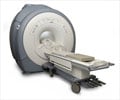Princeton University researchers developed a new scanning technique that allowed them to watch the brain in action in a better way.
While describing how they used functional magnetic resonance imaging to study brainstem activity in dehydrated humans, the researchers said that the scanning technique allowed them to watch the brain in action.In a study, published in the journal Science, the researchers presented the subjects with a visual clue, and, at varying intervals, gave them a drink.
The research team said that with the help of their scanning technique they were able to track changes in blood flow in areas of the brainstem associated with enhanced activity of the brain chemical dopamine, as the person experienced either pleasure or disappointment at receiving or not receiving the reward.
"For a long time, scientists have tried looking at this area of the brain and have been unsuccessful -- it's just too small," said Kimberlee D'Ardenne, the lead author on the paper.
Scientists wishing to use brain scans to study brain chemicals like dopamine are often relegated to watching its effects in other more accessible parts of the brain, like the prefrontal cortex and ventral striatum. However, this is downstream of its source, and therefore possibly much less accurate, D'Ardenne says.
"We wanted to try because the brainstem is so important to activities in the rest of the brain. We believe it could be a key to understanding all kinds of important behaviour," said D'Ardenne, a postdoctoral student in the Department of Chemistry.
Advertisement
"It could also open up entirely new avenues of study," he said.
Advertisement
They weeded out distortions caused by many pulsing blood vessels in the brainstem, and employed computerized rules of thumb known as algorithms and imaging techniques to reduce the effects of head movement and combine images from different subjects.
According to them, the MRI device produced three-dimensional images that showed what portions of the brain engage during actions and thought processes, which allowed them to correlate physical processes with mental activities with unprecedented precision.
Their experiments confirmed results already seen in animal studies, showing that blood flow increased in dopamine centres of the brainstem when test subjects were happily surprised with a reward.
However, there was no activity when participants received less than what they expected, a finding that is different from the results of previous studies looking farther downstream.
"We are just at the beginning of understanding these crucial pathways. But it gives us a hint about what is possible to know," D'Ardenne said.
Source-Medindia
SUN/C











